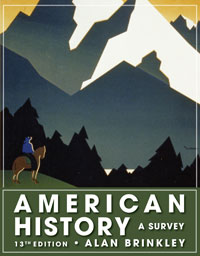1 A) liberal domination of the federal government. B) bitter partisan struggles. C) conservative control despite a Democratic president. D) bipartisan accomplishment in Congress. E) liberal domination of the presidency but conservative control of the House and Senate. 2 A) create protectionist tariffs through the negotiation of NAFTA. B) isolate the United States from the global market as much as possible. C) support a global economic perspective and strongly advocate free trade through documents such as NAFTA. D) pursue a moderate course that combined general free trade principles with high tariffs to protect the most vulnerable American industries. E) dismiss the idea of free trade. 3 A) mental health B) child welfare C) educational improvements D) health care reform E) workplace equality 4 A) had failed to significantly reduce the budget deficit. B) had succeeded in reducing the deficit to some degree, but had not managed to balance the budget. C) achieved a balanced budget. D) achieved the first budget surplus of the twentieth century. E) failed to achieve a balanced budget. 5 A) made no progress in either the House or the Senate. B) achieved considerable support in both houses but led to no indictments. C) were successful. D) led the House to indict the president and the Senate to convict him. E) led to two indictments in the House but an acquittal in the Senate. 6 A) Al Gore won the popular vote. B) George W. Bush won the popular vote. C) John McCain won the popular vote. D) it could not be determined who won the popular vote. E) Al Gore won both the popular and electoral vote. 7 A) California. B) Texas. C) New York. D) Florida. E) Ohio. 8 A) was unanimous. B) allowed the recounts to continue until the winner of the election could be determined. C) argued that the standards for evaluating the disputed ballots were too arbitrary to withstand constitutional scrutiny. D) was greeted with nearly unanimous support by an American public that had tired of the controversy. E) immediately halted the recounts. 9 A) instituted the largest tax cut in American history in his first year in office. B) refused to cut taxes even after he promised to do so during the campaign. C) increased the income tax but reduced the nation's sales tax. D) instituted the largest tax increase in the nation's history. E) instituted the second largest tax increase in the nation's history, after his father's. 10 A) the highest rate of poverty in the post-World War II era. B) a decline in the relative importance of heavy manufacturing. C) an increase in the number of families needing more than one income to maintain their desired standard of living. D) an unequal distribution of wealth and income, with the middle 40 percent experiencing a decline in wealth. E) the lowest rate of poverty in the post-World War II era. 11 A) decreased by more than 25% B) remained relatively static. C) increased by more than 100%. D) increased by more than 1000%. E) decreased by more than 50%. 12 A) the Enron scandal. B) the sell-off of "dot.com" stocks. C) the growing disparity between rich and poor. D) the collapse of the steel industry. E) Bush's large tax cuts. 13 A) the Internet. B) the personal computer. C) the Human Genome Project. D) the cure for Alzheimer's disease. E) Microsoft. 14 A) was growing older. B) was getting younger. C) had a vastly increased birth rate. D) had a birth rate that remained relatively static. E) was becoming less diverse. 15 A) Despite the efforts of the 1960s, all classes of blacks were falling further behind whites. B) Working-class blacks made limited strides and failed to match their white counterparts. C) Working-class blacks made significant strides but white-collar options remained closed, so middle-class blacks made little gain. D) Except in the South, average family income for blacks matched that of whites by the 1990 census. E) The black middle class made significant gains, but the gap between the black middle class and underclass was accentuated. 16 A) homosexual men B) homosexual women C) heterosexual men D) heterosexual women E) homosexual men and women 17 A) abstinence B) birthright C) baby alive D) right-to-life E) pro-choice 18 A) Apple. B) Microsoft. C) Hewlitt-Packard. D) IBM. E) None of the answers are correct. 19 A) acknowledged that all human genes could not be identified or mapped. B) accomplished the identification of all human genes faster than expected. C) accomplished the identification of all human genes slower than expected. D) received no competition in its mission to map all human genes, and thus was able to complete the project faster because of it. E) made major breakthroughs in the ability to do research on human stem cells without destroying embryos. 20 A) WTO B) UN C) NATO D) NAFTA E) EU





